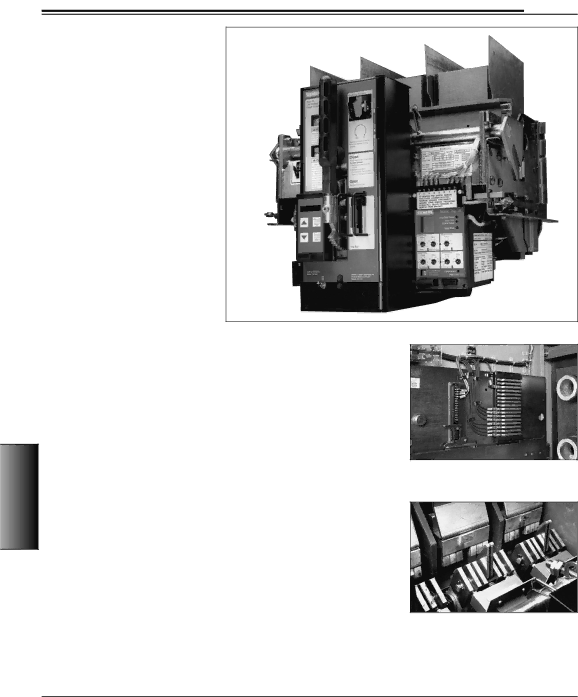
480V Metal-Enclosed Switchgear
LV Power Circuit Breakers
General
The Siemens RL series circuit breakers are designed for up to 600 volt service with current carrying capacities of up to 5000 amperes and interrupting capacities of up to 130,000 amperes unfused or 200,000 amperes fused.
These compact, fast operating circuit breakers incorporate a stored energy closing mechanism, either manually or electrically charged, for fast, positive closing.
A
Manual tripping is performed with the push lever on the front of the breaker. Up to three padlocks can be used to lock the breaker contacts in the open position.
Typical Breaker Features
J | Arc Quenchers |
J Main and Arcing Contact Structures | |
J | Inductive Tripping Sensors |
J | Control Wiring |
J | Interlocks |
Type RL Circuit Breaker With Static Trip III Trip Unit And Optional Breaker Display Unit (BDU)
4
480V
J | Position Indicators |
J | Interpole Barriers |
J | Mechanical Trip Bar |
J | Auxiliary Switches (option) |
Each circuit breaker is a complete
Tables 4.16 and 4.17 show circuit breaker operating and control data.
Circuit Breaker Racking
Racking is accomplished by turning a racking screw on the front of the breaker and may be done with the compartment door open or closed. The racking screw turns
As the racking screw is turned counter- clockwise, the breaker frame moves out of the compartment and disconnects the primary contacts, followed by the sec- ondary contacts. With only the secondary contacts connected (test position), the breaker may be closed and opened for testing without energizing the load. An indicator located on the front of the breaker identifies the position of the breaker in the compartment.
Primary Disconnects
Primary current is applied to the circuit breaker through silver plated disconnects. The stationary contacts are mounted through solid
Secondary Disconnects
Secondary circuits are connected to the circuit breaker through
Secondary Disconnects in Cell
Left = Communications
Right = Breaker Control
Main and Arcing Contacts — Similar Design for all Ratings
54 | Siemens Electrical Products and Systems | CSI Section 16470 | |
Specification Guide | |||
|
|